The Tour to Sri Lanka, which meant so much for Neila Mami
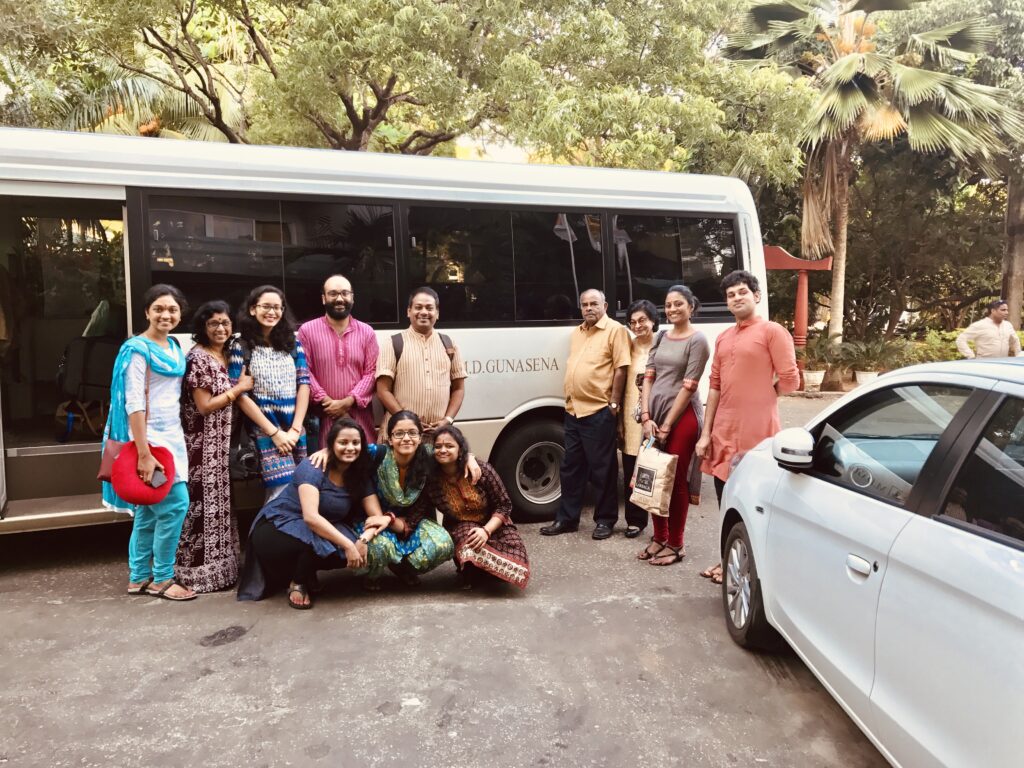
By Yashvini Raveendra “All of the dancers and the rest of the team made a vow. A vow to make Neila Maami proud and show people the talents that has been produced by Apsaras Arts. We do know for a fact that even though Neila Maami has left us, her legacy will never end. We will keep fighting for what she started and keep the spark of dance alive, ‘ says Yash Raveendran as he reminisces his memorable travel tour to Sri Lanka. I was a blessed child to have grown up under the guidance of both Sathyalingam Mama and Neila Maami. I first started as Mama’s student, learning Carnatic music from the tender age of 5 and it was truly a sweet memory. I would remember frolicking into their house in Potong Pasir with my pink princess bag – the bag that Mama thought was bigger than me. I would then sit down on the carpet and lay down while he sang to his heart’s content and that’s when Neila Maami will come downstairs and laugh at our “singing” classes – which was just him singing and me playing around. And he would always argue back saying that I was always listening to him and from that, I would pick it up and become a great singer. Neila Maami was such a beautiful woman, inside and out. She always made for me all kinds of food and made sure that whenever I came over, I’d have a plate of food. And we both shared a love for modakam, especially the ones made by the Ceylon Road Temple – Sri Senpaga Vinayagar Temple. She’d always make sure I had one or she’d pack it up and send it to me through my mother. She held me, fed me and took care of me like I was her own grandchild. She truly gave me a memorable childhood and a family that I can never part with. But most importantly, she showed me a beautiful art form that has impacted my life in so many ways. Neila Maami had also taught me life lessons and skills through this art form and her passion for Bharathanatyam has always inspired me. She was a person a lot of people aspired to be – a strong-willed woman with such elegance, intelligence and a smile that could light up a person’s day. Our Sri Lanka tour meant the world to Neila Maami. Going back to her’s and Mama’s hometown brought immense joy to her. She told us to not come back, no matter what happened. She was upset that she could not join us but nonetheless, she showered her blessings upon us before our first show at Nelum Pokunar Theatre. One of the dancers even mentioned how calming it was to hear Neila Maami’s voice and it immediately washed away all their fears. And to sidetrack a little, Neila Maami always had that effect. She knew the right words to say and her voice always brought ease to others. When the news broke, we were a wreck. It was hard to digest the fact that our guru has left us but we picked ourselves up and pushed on to give everyone a fantastic performance and showcase the talent we had in Apsaras. The talent Neila Maami nurtured and produced. People were impressed and I was amazed by the amount of passion and dedication our dancers had put into the performance. The dancers performed at Jaffna Hindu College, one of the most famous colleges in Jaffna. The stage was beautiful, not very big but just sufficient for the production. Even the lighting was amazing and it helped bring out the magic of Alapadma. Alapadma showcased the different Hindu mythologies in a more contemporary style. There was beautiful chemistry between the dancers and everyone looked simply stunning on stage. The energy was really great and the dancers gave their very best and all their hard work really paid off. I felt so mesmerised and so at ease while I was watching them. It made my heart squeeze in joy as I knew Neila Maami was watching them from above and she was certainly very proud of the amount of hard work, passion and dedication they had put into Alapadma. All of the dancers and the rest of the team made a vow. A vow to make Neila Maami proud and show people the talents that has been produced by Apsaras Arts. We do know for a fact that even though Neila Maami has left us, her legacy will never end. We will keep fighting for what she started and keep the spark of dance alive.
Talk on “Banteay Srei – the Khmer Jewel” to Friends of the Museums
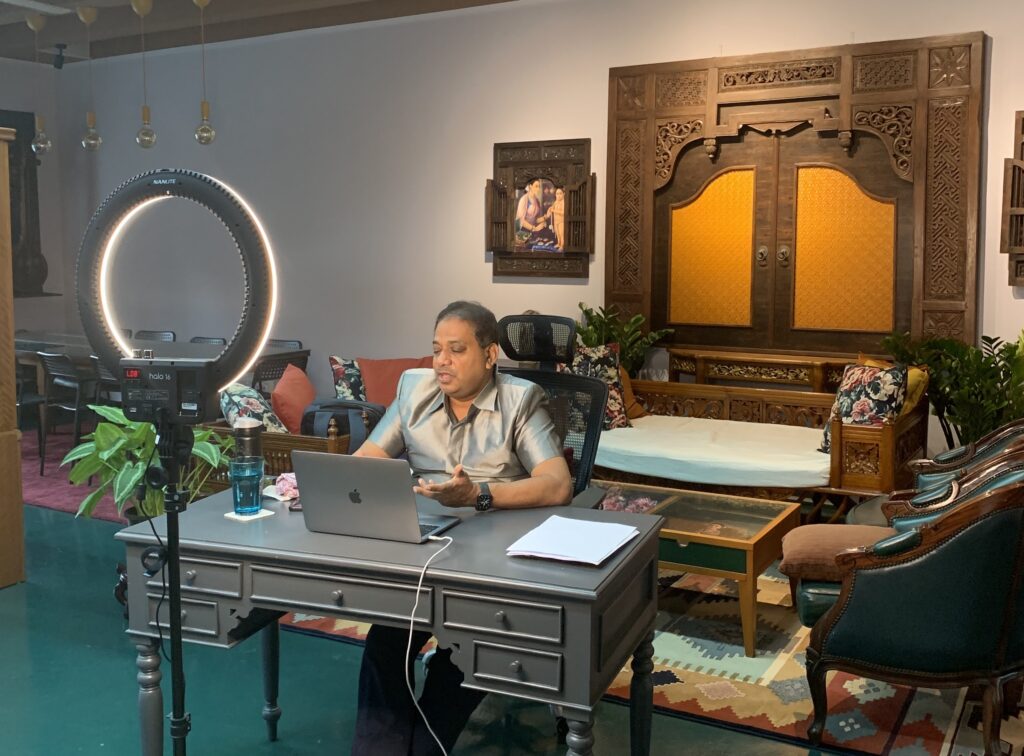
Virtual Events On 4th November 2020, Aravinth Kumarasamy gave an hour-long mesmerising talk on Banteay Srei, the Khmer temple in Siem Reap, Cambodia that inspired Apsaras Arts upcoming production – “Amara – Dancing stories of Banteay Srei” which premieres on Friday 20thNovember 2020 8pm as part of Kalaa Utsavam, Esplanade, Theatres on the Bay’s annual Indian festival of arts. This production will be available digitally till 29th November 2020 1159pm via tickets purchased on SISTIC: Click here In the talk, Aravinth detailed the historical context of this unique temple – Banteay Srei and how it came to be created in the 10th century by the Khmer kingdom. He also drew connections to the many stories carved in the bas reliefs derived from ancient Hindu texts of the Mahabharata, Ramayana and Puranas. He provided his perspective on how these stories have been interpreted within Cambodian society and how French archaeologists rediscovered this temple in the 19th century and its significance among the pantheon of Khmer architecture. He also shared how “Amara” came to be inspired by these carvings, the movements within the architecture and the visual feast of dance performed by the many characters featured including Shiva, Parvati, Ravana, Yoginis, Apsaras and the interpretations intended by the Khmer sculptors. FOM members who are active docents at Singapore museums and enthusiasts of history & heritage engaged in many inquisitive questions. They appreciated Aravinth’s artistic impressions and asked questions on how the sculptures can be conveyed through classical dance. Many spoke of their trips to Siem Reap to see the famed UNESCO heritage site, Angkor Wat but spoke of a much needed revisit revisit in light of this talk to this more obscure but jewelled temple of pink stone. An engaging session that helped bring excitement to the upcoming launch of Amara.
Spotlight Series October 2020
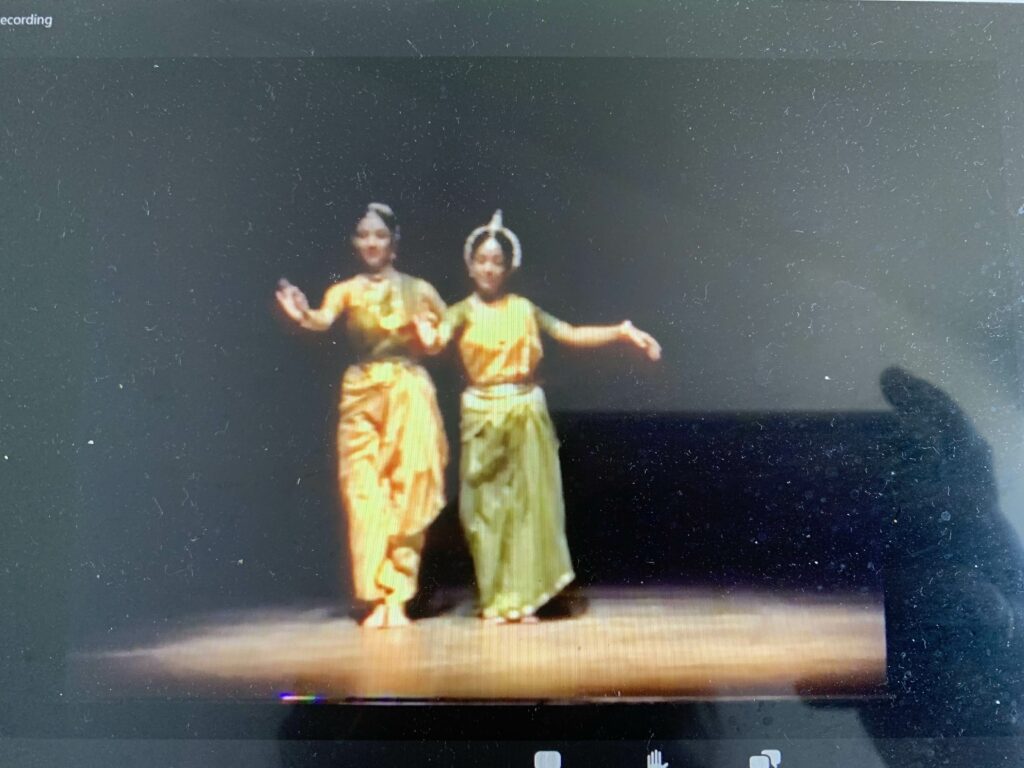
In a session entitled “Art of Collaboration” featuring two stalwarts of classical dance – Leela Samson and Madhavi Mudgal, they shared their early interactions in pioneering efforts in the genre of collaborative dance performances. This conversation was guided by Aravinth Kumarasamy who engaged them in an effortless dialogue of memories of their craft and long-held friendship and common goals in their dance journey. They both shared that they first came together in a TV series, where as they performed their dance form’s footwork, a realisation that a common ground could be found. They began work with certain Ragas which helped them explore a collaborative dance. Both reminisced of the fun times they had in 1975-76 in Delhi and Raag Hindolam & Raag Malkauns which opened up these possibilities. Leela akka shared that when collaborating, it was important to find similarities within the natural form of the artform which brings harmony yet allows for appreciation of the differences. She called their collaborative work – a “confluence” of ideas. Madhavi didi spoke about “Sanskriti” – a togetherness where the exploration was not a competition of ideas yet on reflection, this kind of jugalbhandhi had not been done before them. They also spoke about the importance of creating silences within a performance and the importance of staying true to ones’ own dance form and working on finding compatibility. Much credit to their early collaborations was given to Madhup Mudgal (brother of Madhavi didi), acclaimed Hindustani vocalist, who helped them with his compositions especially in the use of Thumris & Khayal and gave them latitude to explore the concept of Abhinaya in Thumri. Madhavi didi spoke of the difficulties of collaboration in the 1970s when they were very much on their own – no funding, handling all aspects of production & negotiating both the creativity and the practical aspects of a show. She noted the tremendous support from vocalist, O S Arun and his willingness to try new ideas. She credits the fact that as young artistes then, their openness to experiment and exploration helped. Reminiscing, Madhavi didi shared the challenges in finding space, the lack of resources for set design & finding affordable yet compatible sarees. Leela akka went on to explain how the “Bols” were negotiated in their collaboration – the precision needed and “journeying into the others’ space.” She emphasised the need to make effort to learn about the other dancer along with the artform without being judgemental and giving mutual respect to both the person and the style. Madhavi didi spoke about the influence of their Gurus who were alive then to critique their collaboration and she explained that their creative process embedded the inputs of musicians – e.g. Shubha Mughal (her niece), a young vocalist then would perform a Thumri in Khayal-style and they would let the singers sing and as choreographers they would listen, imbibe and then create their steps . They both emphasised the importance of retaining the essence of the genre of the music. Another important aspect of choreography included the need to be sensitive to the audience watching as they would need to watch two dancers at the same time, thus many considerations would need to be evaluated when developing a duet. Leela akka put it astutely when she said, “There is no need to make it a “drama” – a duet is not a tennis match. The dancers should come very close yet not be merged together.” In the Q&A segment, there were many questions from dance students. Both artistes shared some key wisdom. They spoke of the importance of lessons in learning of the artform – as students, much is copied yet to become a serious dancer, the need to get deeper into each item happens when working on a collaboration. This kind of initiative helps a dancer realise how much you don’t know and the influence you can have on the other and the long-standing impressions that get created. They advised that in a collaboration, the compatibility of dancers is important. A willingness to compromise, to find a third area of “movement vocabulary” that speaks to each other. The dancer’s attitude towards the other should be based on a mutual understanding, not to be pressurised to do something & to give the collaborative experience – time to flourish. Dancers should have a thirst and quest to work with others. An overarching message from both the artistes is that our Indian dance traditions have certain structures which need to be respected and there is much to create within it. Over 80 participants were present at this engaging and inspiring session.
AMARA – Making the Impossible Possible
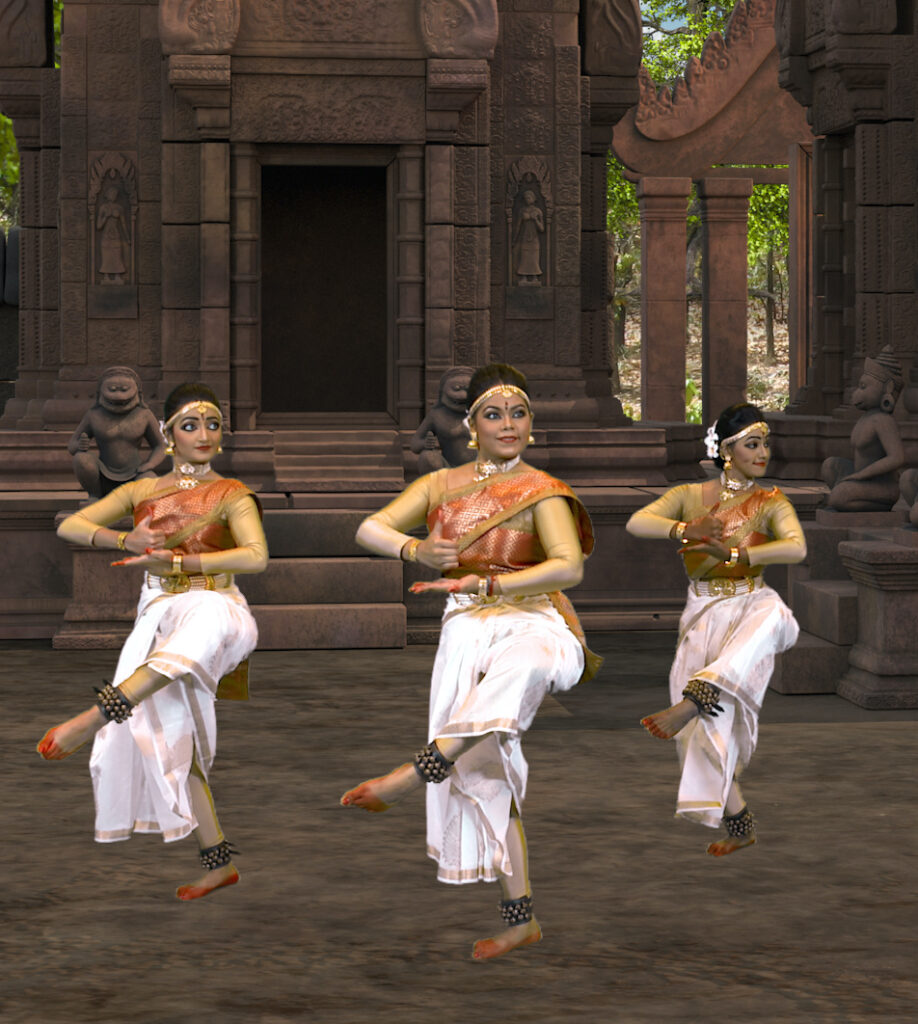
Special Feature by Mohanapriyan Thavarajah “From the forest of his matted locks, water flows and wets his neck, on which hangs the divine snake like a garland, and his drum incessantly plays damat, damat, damat, damat.” Thus, Shiva is engaged in a very vigorous Tandava dance, to bless and shower, prosperity on the entire universe. That day in the flowing water, I saw Shiva’s Lingas dance. My approach to the choreography is to portray the emotions that brim through these carvings at the Banteay Srei temple and bring them to live. In this production, the Yoginis will take us through the temple with dancing stories and the audience will be transported to the temple itself. As we are looking forward to the premiere of Amara on 20th November, it served as an opportunity for me to share my experience of the creation of this production. During this unprecedented times of Covid-19, the making of Amara was not an easy task. To keep our spirits up in this new normal, we took baby steps with Sita: the first digital production of Apsaras Arts. This work enlightened us with possibilities to think outside the box. Amara is an hour-long production which convinced us to adopt the 3D green chrome technology meaningfully. My vivid memories of trips to Cambodia are still so fresh in my mind. Everything I saw there has deeply affected my thoughts and has served as an inspiration. The artistry of the Khmers is simply astonishing, I know their architecture is irreplaceable with any other creations of mankind but what awed me is their reimagination and interpretations of the concepts of religion and art. The idea of carving thousands of Lingas in the river bed of Mount Kulin is evidence of their brilliant imagination. They combined nature and religious symbols to create sacred surroundings not only in temples but wherever they could find space for divinity. I still remember touching the Linga in the middle of the flowing river and remembered the Shiva Thandav Strotra lines “From the forest of his matted lock, water flows and wets his neck, on which hangs the divine snake like a garland, and his drum incessantly plays damat, damat, damat, damat.” Thus, Shiva is engaged in a very vigorous Tandava dance, to bless and shower, prosperity on the entire universe.” That day in the flowing water, I saw Shiva’s Lingas dance. Banteay Srei was the first temple that I visited in Cambodia. The soft pink stones of the temple aren’t immediately visually convincing as an architectural building but it resembled a dwelling made of ruby gem stone with cuts of intricate carvings. The details of carvings were similar to my father’s goldsmith works that I have often admired. The presiding deity is Chandrasekhara but interestingly, it is the Yoginis – beautiful female figurines which have been craved and celebrated all around the temple as a gesture of pride to their Matriarchal society of that time. The Hindu gods and goddess have been absorbed into the typical features of Khmer. It is noteworthy that the presiding deities of Angkor temples like Shiva and Vishnu appear majestic in their looks which are in sync with the concepts of king-god synergies. The carvings of the Hindu gods and characters are often studied in the myths but in the Khmer style, these are not static carvings but they are in motion. Their body language and curves are so convincingly realistic and there is clarity in the expressions on their faces. My favourite sculptures are of Ravana lifting Mount Kailash and Mahishasuramardhini. Unlike the Indian version of Ravana with his horizontally aligned ten heads, the Khmers have visualised Ravana’s ten heads to be decked on top of each other like a mountain. This is where the visualisation is illuminating to a choreographer like myself in order to understand the emotions of characters in detail. For example, by seeing Ravana’s heads decked the way, it shows his arrogance and the power he commands in his actions. The sculptors have also created motion with Ravana’s multiple hands lifting the mountain, easily more than 20 hands have been drawn capturing the enormous arm strength of his action. The level of detailed carving continues with Shiva seated calmly while all other divine beings including Parvati holding frightened expressions. In the case of Mahishasuramardhi, she is carved slaying the buffalo headed demon holding on his tail in an upside-down swift movement which shows us the power of goddess who ensures triumph over evil. In truth, stopping at any of these decorated lintels and looking up close at these carvings, one may realise these lively sculptures are breathing softly through the magical stones of Banteay Srei. My approach to the choreography is to portray the emotions that brim through these carvings and bring them to live. In this production, the Yoginis will take us through the temple with dancing stories and the audience will be transported to the temple itself. You will need to watch the production to behold this for yourself. With safety distance measures, the dancers had to deal with many restrictions in the day long shoots. This production is filmed using the green screen chrome technology where perspectives of dancers are changed for the cameras to capture the best of their moves. This was a new approach for us as we had to dynamically adapt ourselves to change, to add something on the spot to meet the expectations of the director, of the visuals planned. The challenge lay in sustaining the stamina and still evoke rasa in repetitive, multiple shots. This experience has been a great learning lesson in the need for patience, focus and determination. Getting the costumes ready for Amara was a hunt in the tunnels. As we knew that we have very limited resources in Singapore and with no travel and courier exchanges between countries – complicated. This journey enabled me to explore Singapore’s textile sector and allowed me to find the closest fabrics similar to Cambodian Ikats and Silks.
The square and the circle of the Indian arts
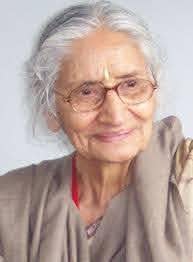
by Kapila Vatsyayan The Square and the Circle of the Indian Arts is a major contribution in Indian art history. More than a book on the theories of arts, it has far-reaching implications for the way one thinks about the future of indology and art history. It provides a model to be emulated for inter-disciplinary research, not only between the arts but also the sciences and the arts.The book begins by re-examining the imagery of the Vedas and the Upanisads, highlighting some aspects of early speculative thought which influenced the enunciation of aesthetic theories, particularly of Bharata in the Natyasastra. The next chapter introduces a new methodology of analyzing the rituals (yajna) as laid down in the Yajurveda and the Satapatha Brahmana, the best way to focus the relationship between the text and the practice. Four chapters follow – one each on drama (natya), architecture (vastu), sculpture (silpa), and music (sangita). Each presents some fundamental concepts of speculative thought, concerned with each of the arts and purposefully correlates these with actual examples both of the past and the present. This second edition remains an event not only because the book benefits from the works published since the first edition, but also because it presents the author’s integral vision and her unique adventure into the boundaries of several disciplines. It demonstrates the efficacy of her earlier approach of investigating the imagery and the metaphors as basic to the discourse of the Indian tradition. She proposes a multi-layered cluster of concepts and metaphors which enable one to decode the complex multi-dimensional character of the Indian Arts. Also significantly she suggests a deeper comprehension of the relevance of the developments in the field of traditional mathematics and biology for the study of the language of form of the Indian Arts. About the Author Kapila Vatsyayan (कपिला वात्स्यायन) (25 December 1928 – 16 September 2020) was a leading scholar of Indian classical dance, art, architecture, and art history. She served as a member of parliament and bureaucrat in India, and also served as the founding director of the Indira Gandhi National Centre for the Arts.In 1970, Vatsyayan received the Sangeet Natak Akademi Fellowship, the highest honour conferred by the Sangeet Natak Akademi, India’s national academy for music, dance and drama; this was followed by the Lalit Kala Akademi Fellowship, the highest honour in the fine arts conferred by Lalit Kala Akademi, India’s national academy for fine arts in 1995. In 2011, the Government of India bestowed upon her the Padma Vibhushan, India’s second highest civilian honour.
The Consummate Musicianship of a Dancer
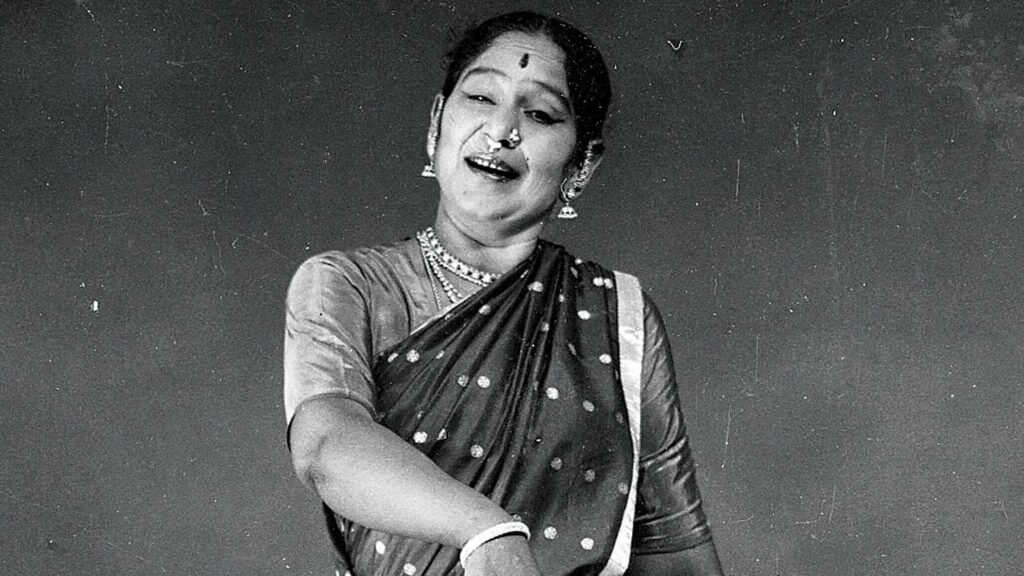
Distinguished Guest Column By Savita Narasimhan “From the day I first heard this music, I have been unabashedly in love with it.” Says Savita Narasimhan, a Carnatic vocalist, teacher and painter. She is also the Director of the Chennai-based Museum of Performing Arts MOPA. This article is from a series she wrote as she curated MOPA’s first exhibition on Balasaraswati titled ‘Credo of a Dancer’. In the Carnatic world, most of us in my generation or the next have heard and been enamoured of the music of T Brinda and T Mukta and through them, their grandmother, the great Veena Dhanammal, whose music we may not have heard much, but whose tales form part of the Carnatic lore that is handed to every eager student. From the day I first heard this music, I have been unabashedly in love with it. It was March 2019 and I had begun working on an exhibition on another member of the Dhanammal family, the redoubtable Balasaraswati, to mark her birth centenary. I had the privilege of hearing her brother T Viswanathan live just once. This was in the late 90s and his demise left me yearning for more. Curating an exhibition on Bala brought me back into the warm embrace of their music. Her grandson Aniruddha shared several recordings of her music that day and I recall the first time I heard ‘mosa jesene’ in Sindubhairavi. This recording had Bala and her brother exchanging phrases even as she danced (her voice coming from farther away on the stage). It had, besides an obvious Hindustani influence, a richness, a uniqueness, a depth of feeling that ran in my head for months after I first heard it. It left me hungry for more of her music. The next few months saw me hunting for all possible recordings. I realised that there were striking differences between Bala and her cousins Brinda and Mukta. That was explained by Viswa speaking about how each one developed his or her own styles even within the family, while being bound by the aesthetic and musical values that could be traced back to their grandmother. In and down each generation of the family, there had been a lateral transfusion of music from impeccable sources that were handed down as a precious and unbroken heritage. To quote Bala in her speech at the Music Academy, “my great grandmother Sundarammal was a musician as was my grandmother Dhanammal and my mother Jayammal.” The compositions of Shyama Shastri and Subbaraya Shastri were inherited heirlooms, with Sundarammal having learnt directly from Annaswami Shastri. Family lore says that Annaswami Shastri would insist that Sundarammal sing his father’s Todi kriti ‘nannu brochutaku tamasamela’ everyday. This composition became the personal property of Sundarammal who taught it to Dhanammal, who in turn passed it on to Balasaraswati, but never to any other family member or outsider. Anayya’s compositions like ‘charanu charanu’ in Chenjuruti and ‘mahima teliya tarama’ in Shankarabharanam (known better as a pallavi) were family property. The compositions of Muthuswamy Dikshitar in the family also had a direct link to the composer himself. Dhanammal’s guru Panchu Iyer was the disciple of Tambiappa Pillai, a direct disciple of Dikshitar. It was to cure Tambiappa’s illness that Dikshitar composed the Navagraha kriti-s. Veena pustaka dharini in Vegavahini was similarly an exclusive family property. Dhanammal learnt many compositions of Tyagaraja’s direct disciple Veena Kuppier and his son Tiruvottriyur Tyagier from the latter, a great friend and admirer of Dhanammal, many years his junior. She was also perhaps the first musician who rendered Ettayapuram Kumara Ettendra’s compositions as outlined in Subbarama Dikshitar’s Sangita Sampradaya Pradarshini. Prominent composers like Patnam Subramania Iyer, Tiruvottriyur Tyagaier and Dharmapuri Subbarayar composed in her presence and enriched their compositions further by her musical touches. The famous javali ‘smara sundaranguni’ in Paras composed by Dharmapuri Subbarayar was in praise of Dhanammal. Jayammal taught Bala the close relationship between abhinaya and raga, saying “your head, your whole body, must move with the gamaka, the sangati, not just with tala.” Bala’s guru Kandappa Pillai’s rhythmic compositions were guided largely by musical principles and the dance simply had to follow. In the family tradition, raga-s were given life not only through ornamentation (gamaka-s) but also with an intuitive and effective use of voice, intonation and modulation to arrive at the optimal sound and mood. With such a background and training, it is not surprising that almost all of Bala’s artistic decisions were informed by her music. The text may have guided the meaning but it was the musical phrase that shaped the gesture and expression, thereby creating the emotion. Such was her ability to understand the inherent mood of the raga that the music became the catalyst for mime, providing endless options. In Bharatanatyam, the padam is considered the compositional form that gives a dancer maximum scope to express her artistic skills. It is also extremely difficult to sing a padam well, given its super slow pace and nuanced structure and its demands on the musician’s vocal, technical and aesthetic abilities. Bala believed that the padam must be explored continuously because of the infinite possibilities in the poetry and music, the unlimited interpretative possibilities. She developed an instinctive dependence upon the musical gesture as a guide to abhinaya. John Higgins summed this point up succinctly in his presentation at the Music Academy: “To watch Bala sing is to begin to understand a padam…her body leans into each musical phrase as if to coerce it; each syllable of sahitya is allowed to find its level, its own unique sound value. Thus in a dance performance, Balasaraswati breathes with music and the music breathes life into her gestures.” There is a delightful video recording of her brother Viswanathan talking about how she would continuously think musically, taking apart the smallest detail of the song in order to examine it freshly and present it in new ways. A phrase – explored, analyzed, treated with her voice, transformed from a phrase to a ‘opening up’ of myriad forms of expression. He tries to demonstrate her mime for the word ‘vaari’ (combing one’s tresses) by singing the word in various ways in Saveri. We can find a short segment of this
An interview with Devenasan Charles
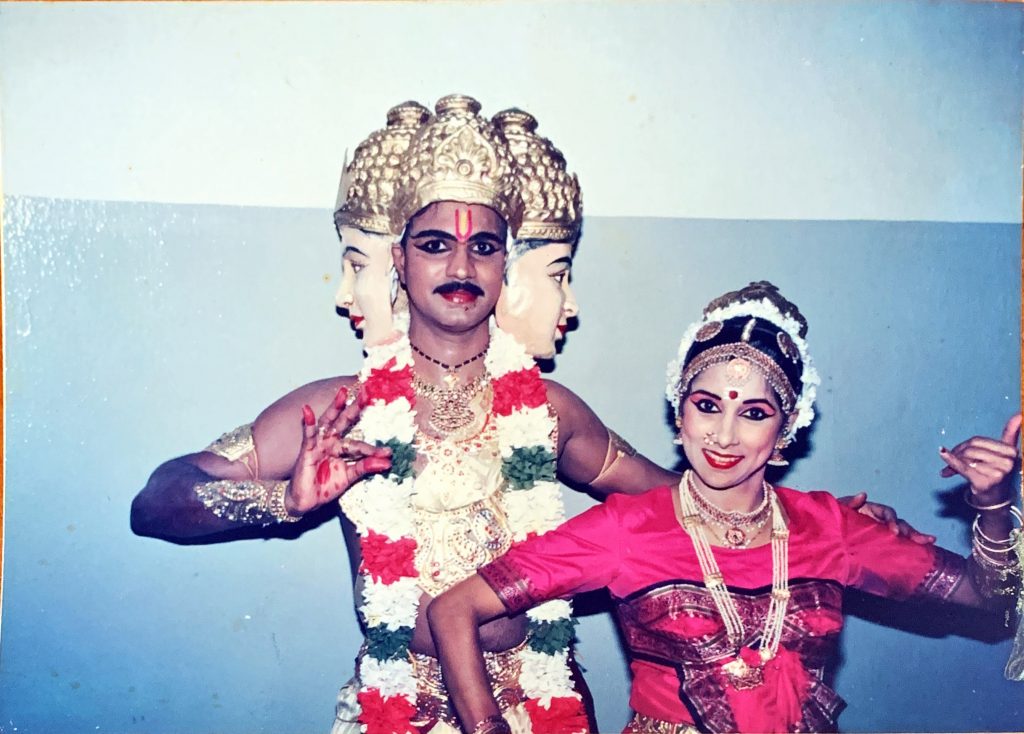
“A life of colour, aesthetics & the discipline of an artiste” An exclusive interview with W Devenasan Charles By Vidhya Nair In this month’s interview, we meet with W Devenasan Charles, for whom learning dance opened doors into a career of a celebrated make-up artist, a life-long performer and a spiritual seeker. “Our culture is from India – a chosen land of the Gods. We must make an effort to appreciate our own culture and find deeper meaning and pride in what is ours,” says Charles as his advice to the next generation of local artistes. VN: When did your interest in the arts happen? Was this something you were exposed to in your family in your youth? DC: I came from a mixed parentage household – Father (Tamil Christian) and Mother (Sinhalese Muslim). Our family value system was built on a strict, rules-based disciplined upbringing. We were exposed to all religions and I kept an open mind. My father was interested in music and self-taught in many musical instruments and often played with his friends. My mother was a fair beauty and often dressed immaculately and I found myself interested in helping her look her best. VN: What was your earliest memories of learning dance and how did you get involved? DC: As a teenager, I was part of an informal dance group and met other like-minded people. I had a natural inclination, poise & rhythm. I was captivated to learn Bharatanatyam when I first saw other young men performing in Kala Mandir’s (now known as Temple of Fine Arts) in the early 1980s and later in Bharataanjali [founded by my senior V Balakrishnan]. I decided to learn formally and began taking classes in my early 20s in both dance & music. Quickly, I was roped into the People’s Association (PA) Indian Dance Troupe when I was 24 which resulted in my early encounters with Mami, who was teaching at PA. VN: Tell us about your early days with PA & Apsaras ArtsDC: At PA, our ensembles largely performed contemporary & folk dances. There was a distinction between the PA dancers and Apsaras Arts girls who already had years of formal Bharatanatyam training. It was Mami through her creative choreography that brought these distinct groups and styles together. She understood the aesthetics of both genres and she helped bring the dancers together so that we would work as a team and perform as a single unit. This bond was built over the decades through our overseas trips representing Singapore. I visited many countries from Paris, London, Germany, Macau, Taiwan, Hong Kong, China, Japan, Malaysia & India. In the course of these trips, I learned and developed skills in make-up & hair, backstage production & costume design. All of these areas require a sharpness to pick up and execute quickly and accurately according to the demands of the production which I enjoyed and took up seriously. VN: Over the decades, what are your memories of Mami and can you share glimpses of your relationship with us?DC: Mami was a strict yet lovable teacher. I used to be very fearful of her but regarded her as my mother and I respected her deeply. She was endearing and called me “Raja….” I miss her but for me, she still lives. I feel her presence and I occasionally have visions of her and consider her demise, a personal loss. We developed a professional and personal relationship that allowed us to be very frank with each other and lean on each other through challenges. My greatest admiration for her is her brave vision to execute productions which would seem impossible at the start but she had the tenacity to make it happen and bring everyone to see her vision come alive. With her guidance, I was able to push my boundaries in playing many roles which has shaped my dance identity and my confidence as a performer and transformation into enigmatic stage characters. [ Charles is known for a number of stage roles which have become synonymous with him – Brahma, Ardhanarishvara & Peacock dance to name a few] VN: How did you branch into other areas like backstage production, hair/make up and make it your full-time pursuit? DC: These roles in Mami’s productions incentivised me to pick up formal skills in make-up. I did a number of courses – Cosmoprof for professional make-up techniques, School of Hollywood for advanced prosthetics, Victoria Jackson Cosmetics to further enhance my professional make-up expertise. To be in this line of work, paying attention to details, being organised, punctual are essential. These skills helped open many doors within the arts industry. From PA to TCS (precursor to MediaCorp), it was no easy feat to take charge of choreography and backstage for over 100 artistes over 10 days of National Day performance and for 13 years, exclusively for Vasantham Channel under the tag “Charles n Team”, I am proud to say that we dressed and styled a generation of artistes seen on TV. Thinking back, my career in this line flourished alongside my own performances simultaneously. I have been a freelance make-up artiste working with a variety of artistes such as Ravindran Drama Group, Avant Theatre, Manimaran Dance Group, Maya Dance Theatre, Bharatha Arts, Sathyalayam and engaged by performers like Roshni Pillay, Sharmila Gunasingam, Priyalatha Arun, Gayatri Sriram, Shanta Ratii, V Balakrishnan, Chitra Sankar, V Balagurunathan, Ramli Ibrahim (Malaysia), Ajit Bhaskar (Suvarna Arts), Girish Malika Panicker and Mrs Shanta Bhaskar till date. I have fond memories of working with well-known Indian cine-artistes like directors Balachander & Parthiban, Solomon Pappaiah, singer Chinmayi, Mathangi, Prasanna, Tippu-Harani, Michael, Pandiarajan, Anita Ratnam, Vani Ganapathy, OS Arun, Methi Oli Group, Leonie Group and I still do large scale events like Singapore Youth Festival troupes, People’s Association and major Apsaras Arts productions like Kannagi & Angkor. In 2000, I received the “Artistic Excellence “award and in 2008, the “Kala Sevaka Mani” award. These recognitions by Mami and Apsaras Arts are an important validation to my contributions. I also received the Top 10